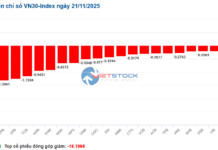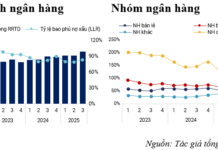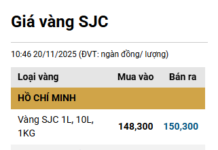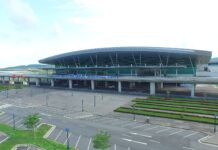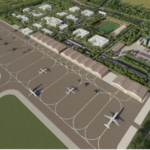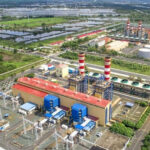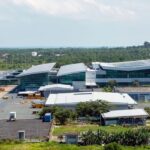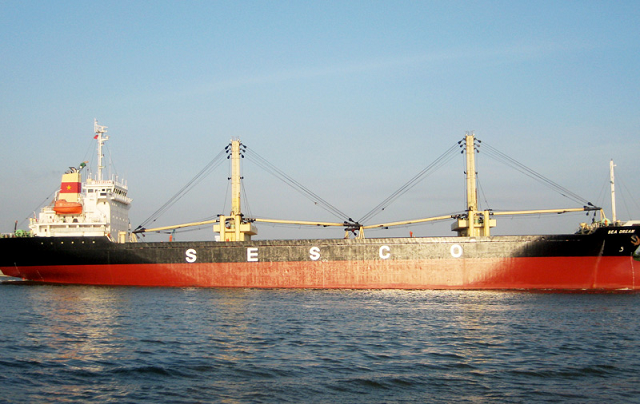Vietnam Exhibition Center, located in Dong Anh, Hanoi, stands out with its massive 24,000-ton steel dome, a modern architectural highlight and a testament to advanced construction technology.
The project, with a total investment of over VND 7,000 billion, was commenced on August 30, 2024, and is owned by Vietnam Exhibition Fair Center JSC (VEFAC), a subsidiary of Vingroup.
The colossal steel dome, the largest in the world, was constructed by Dai Dung Corporation. According to the contractor’s representative, over 1,000 workers and engineers worked around the clock in three shifts, maximizing resources, materials, and super-heavy equipment, including cranes with a capacity of up to 500 tons.
Designed as a space truss with radial ribs mimicking a turtle’s shell, the dome utilizes ASTM-standard steel capable of withstanding a Category 12 typhoon and an 8-magnitude earthquake.
Notably, over 100,000 high-strength steel bolts and screws were installed with an allowable deviation of less than 3mm, along with 3D laser scanning technology to control deformation and ensure absolute accuracy.
Upon completion, the dome not only meets stringent requirements but also sets a record as the largest steel dome structure in the world, entirely built with Vietnamese-made steel.
Such steel dome structures demand intricate construction techniques, superior load-bearing capacity, and bold design vision.
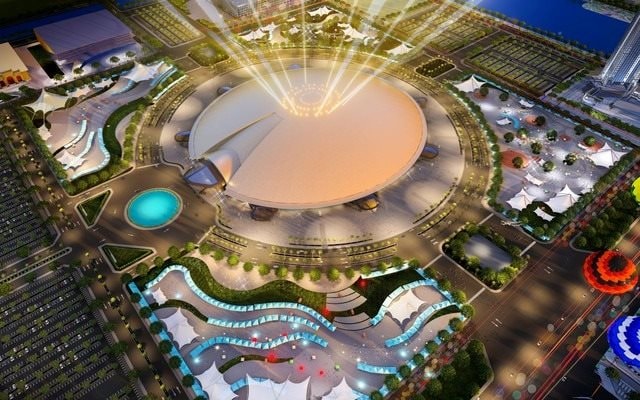
Globally, numerous colossal steel domes have emerged, from stadiums and exhibition centers to national landmarks, showcasing the creativity and prowess of the construction industry.
Sports Stadiums
AT&T Stadium, located in Arlington, Texas, is the home of the renowned Dallas Cowboys NFL team.
Owned by Dallas Cowboys Football Club, Ltd., and billionaire Jerry Jones, the stadium was constructed in collaboration with HKS, Inc. (designer), Manhattan Construction Company (general contractor), and leading steel structure contractors, completing in 2009.
With a total investment of approximately $1.15 – $1.3 billion, the city of Arlington contributed $325 million through bond issuance, while the Cowboys funded the remainder.
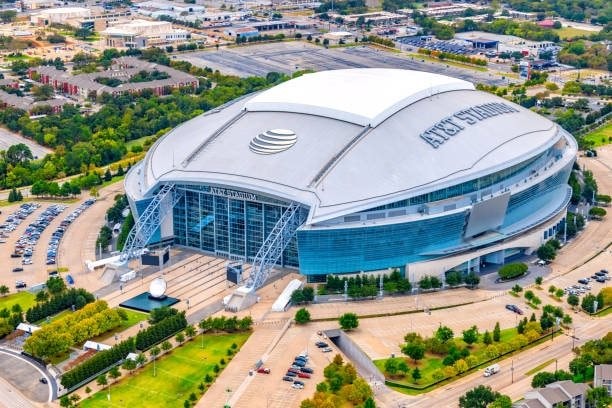
The stadium’s highlight is its massive steel dome, featuring a pair of box girders spanning 1,225 ft in length, 35 ft in depth, and 16 ft in width, capable of withstanding 19 million pounds of load. The retractable dome, with two translucent membranes measuring 256 ft by 410 ft, can be opened or closed in just 12 minutes, along with 120 ft by 180 ft end-zone glass doors that open in 18 minutes, creating a flexible and airy space.
The stadium has a standard capacity of 80,000 seats, expandable to over 100,000 for special events.
Crasus Dome Oita (formerly Oita Bank Dome), also known as Big Eye, is located in Oita City on Kyushu Island, Japan. Owned by Oita Prefecture and operated by Resonac Holdings Co., Ltd., the stadium was constructed from 1998 and inaugurated in May 2001.
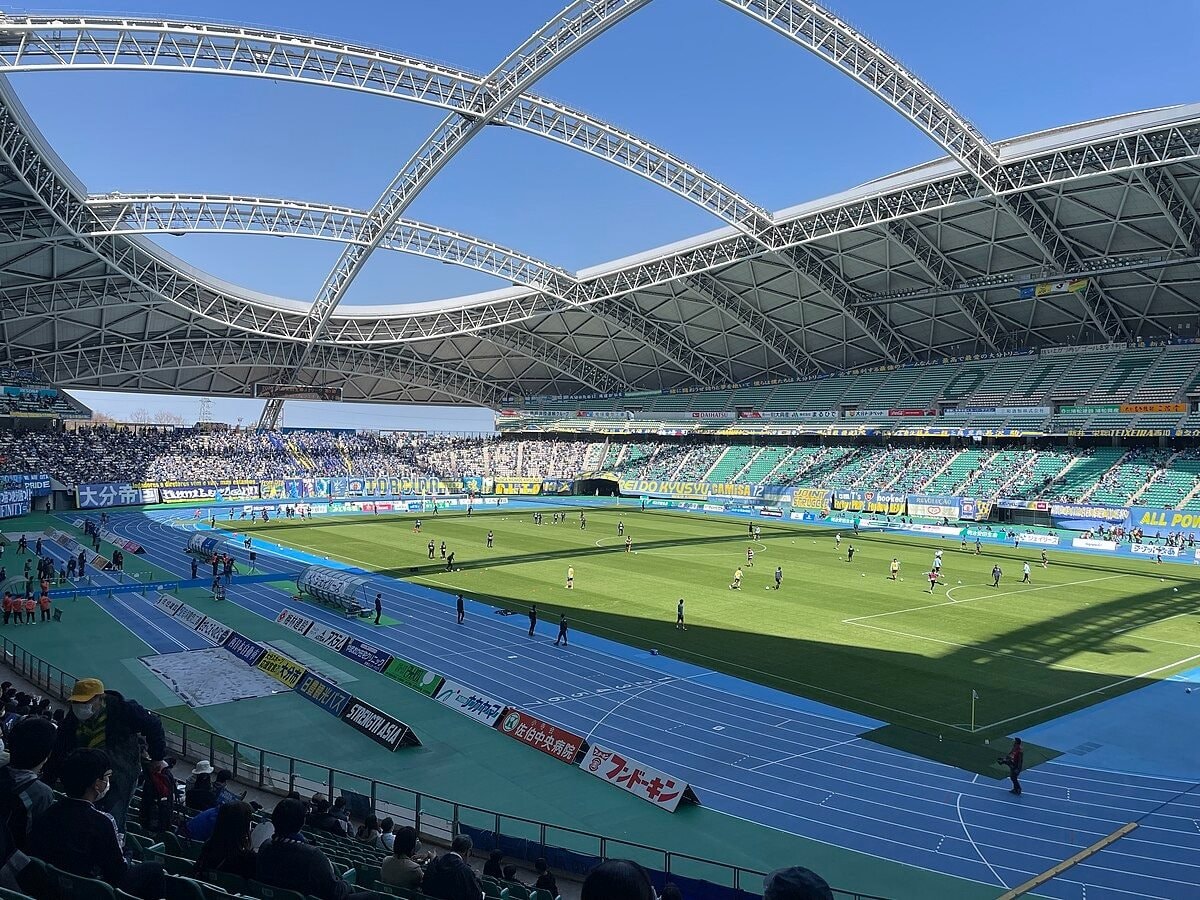
With a total construction cost of approximately 25 billion yen, one of the stadium’s unique features is its retractable steel dome, with a diameter of about 800–900 ft. The dome consists of a steel frame covered with a semi-translucent membrane and can be opened or closed in 20 minutes using a cable-pull system.
Singapore National Stadium, located in Kallang, is the centerpiece of the 86-acre Singapore Sports Hub complex.
Owned by Sport Singapore and operated by Dragages Singapore Pte. Ltd., the stadium has a total investment cost of approximately SGD 1.87 billion (approximately USD 1.33 billion).
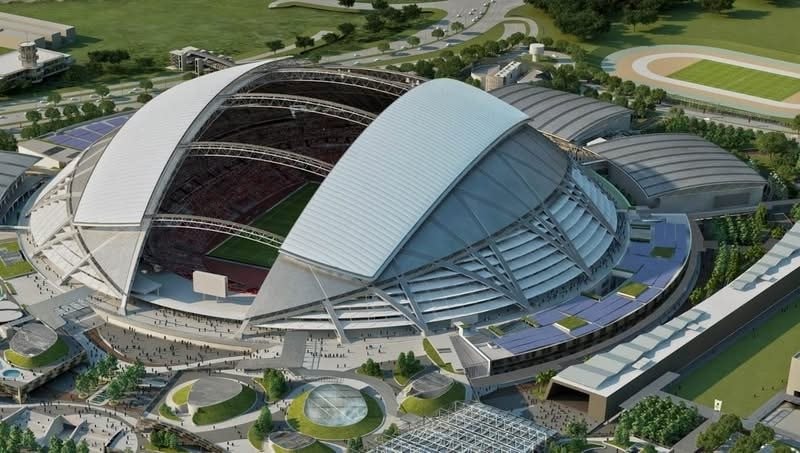
Featuring a retractable steel dome, it spans 1,017 ft in width and reaches a height of approximately 272 ft, making it the world’s largest free-spanning dome. The dome covers an area of approximately 186,220 sq ft, including a retractable ETFE membrane section of approximately 49,510 sq ft, operable within 20 minutes. It also incorporates the world’s largest LED screen and LED lighting strips around the dome’s perimeter.
The lightweight dome structure has a steel density of only 220–265 lbs/sq ft, with a total steel weight of approximately 17,637,000 lbs, significantly reducing material usage and weight compared to international standards.
Astrodome (USA) , inaugurated in 1965 in Houston, Texas, is recognized as the world’s first domed sports stadium.
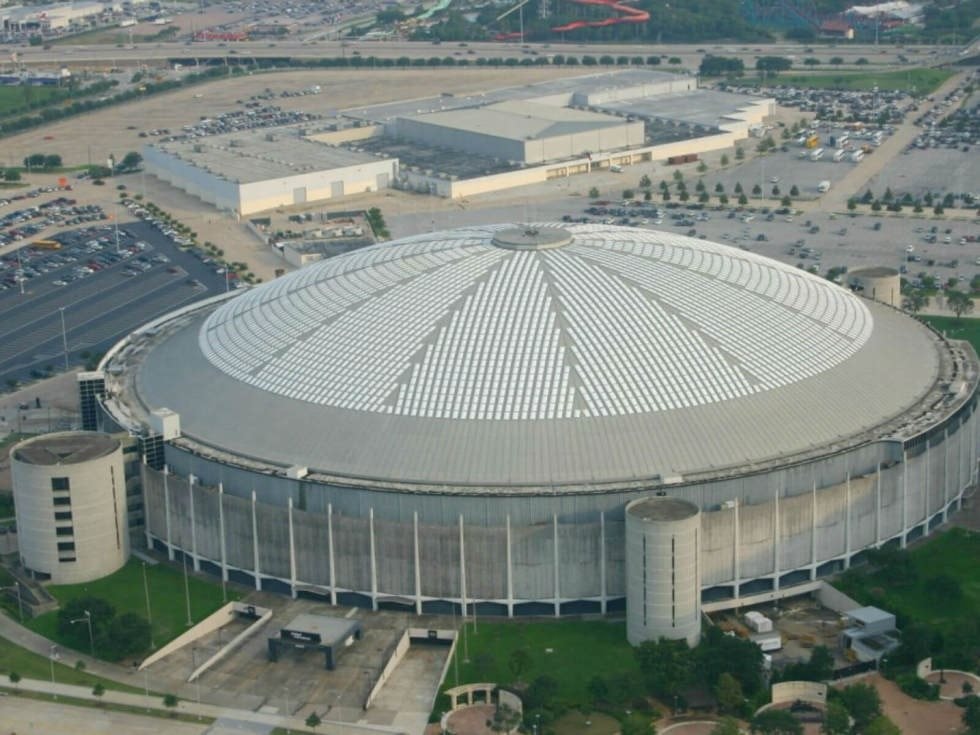
With a diameter of 708 ft and a height of 207 ft, the stadium employs a steel space frame dome covered with translucent Lucite material for natural lighting. Astrodome was developed by Harris County Domed Stadium Corporation, with Hoffman Construction Company as the contractor.
For decades, it served as the home stadium for the Houston Astros baseball team and the Houston Oilers football team.
Exhibition & Convention Centers
The Millennium Dome, located in Greenwich, London, was once the centerpiece of the Millennium Exhibition and is now known as The O₂ Arena. Its roof features a cable-net structure with a diameter of 1,200 ft (symbolizing each day of the year).
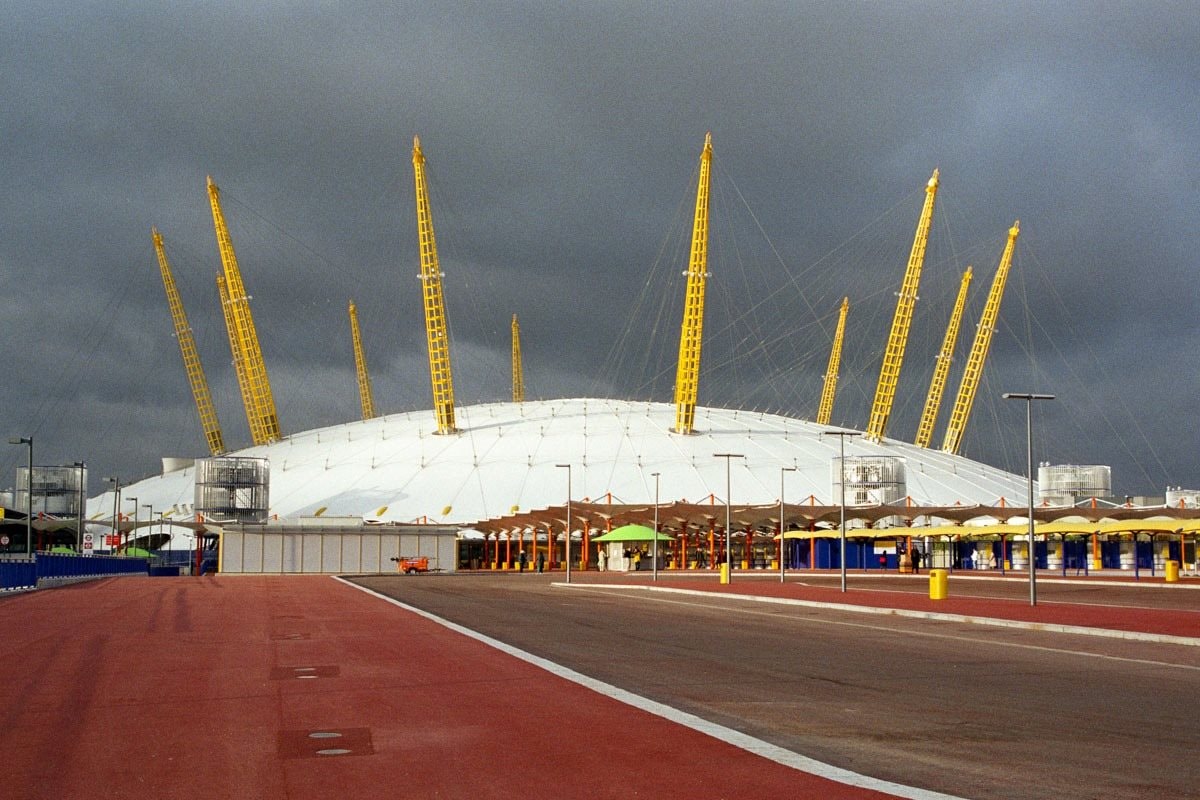
The entire roof is covered with PTFE fabric and supported by 12 steel pillars, representing the 12 months of the year or the hours on a clock face. The roof is so light that it weighs less than the air contained within it.
Messe Frankfurt, Germany, is one of Europe’s largest exhibition centers, owned by the city of Frankfurt (60%) and the state of Hesse (40%).
With 398,294 sq ft of indoor exhibition space and an additional 71,950 sq ft outdoors, the center hosts approximately 310 events annually, supported by about 2,200 personnel.
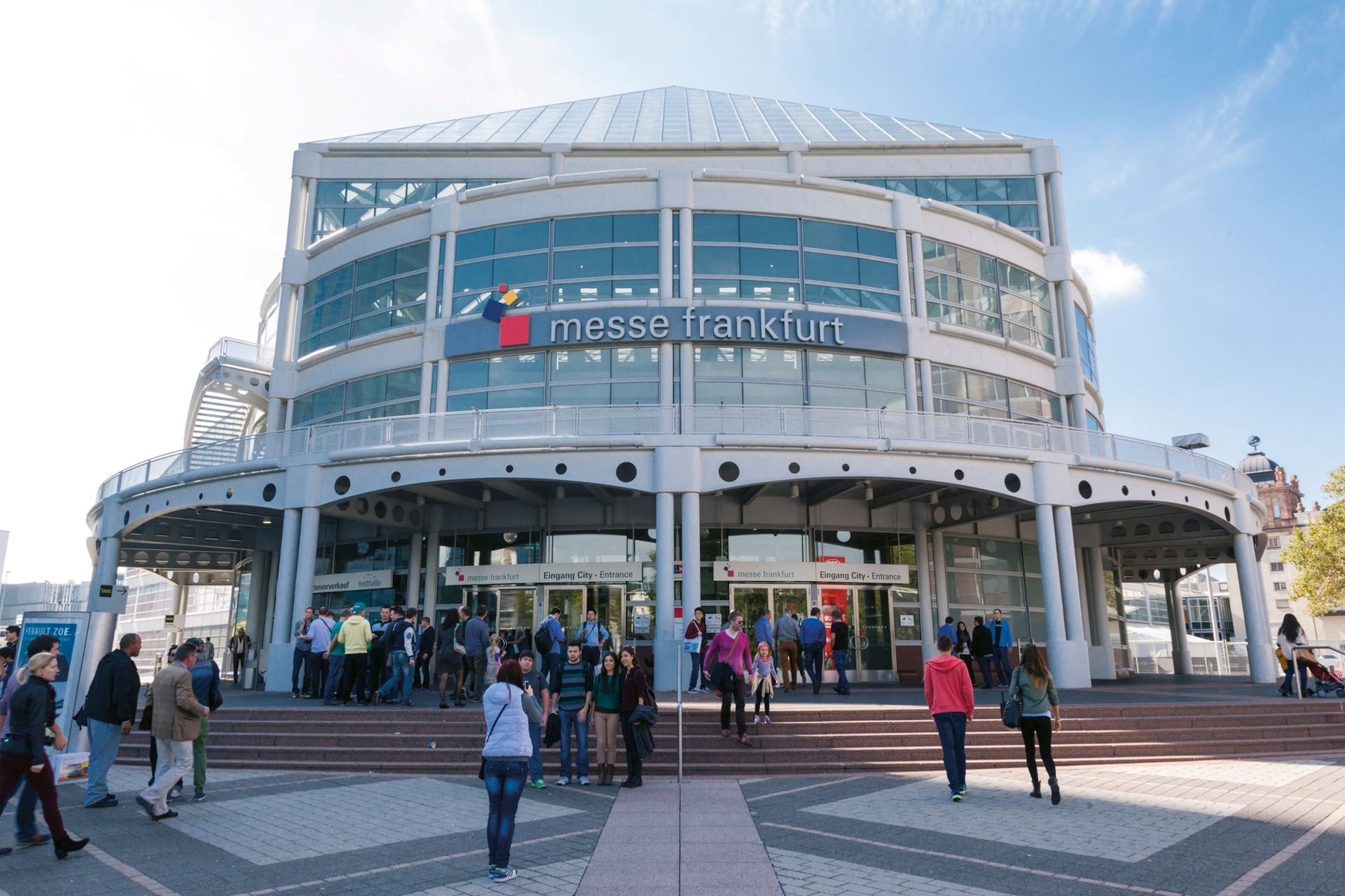
Notable exhibition halls and areas feature oval or cable-net roofs, such as the North Entrance roof, measuring 138 ft by 62 ft, creating a “floating” effect with its slender pyramid-shaped columns. The design maximizes daylighting while optimizing aesthetics and functionality, becoming an architectural landmark within the exhibition complex.
National Exhibition and Convention Center (NECC) in Shanghai, China, spans an area of 15,822,260 sq ft, including 5,382,000 sq ft of exhibition space.
Developed by the Chinese Ministry of Commerce in collaboration with the Shanghai Municipal Government, the center was inaugurated in 2015.
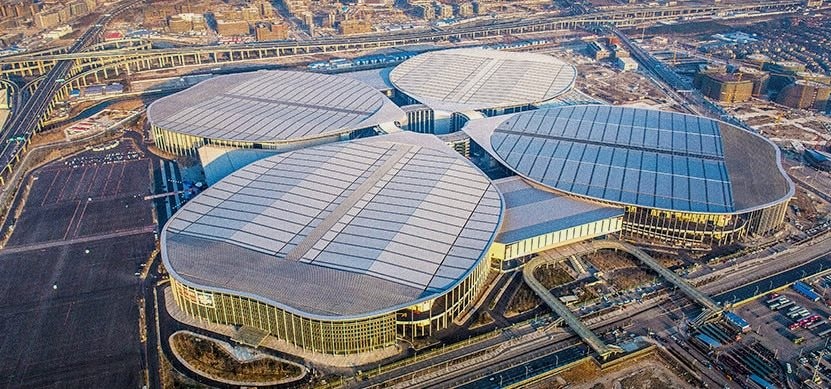
The center features a prominent steel structure in its massive roof, designed as four exhibition halls radiating from the center like a four-leaf clover.
The main exhibition hall spans 974 ft by 1,148 ft, creating an enormous interior space. The roof is designed as a large-span space truss system with cantilevered beams. Tension rods are incorporated into the roof beams to counteract wind loads, and rubber bearings are used to mitigate thermal stresses in the massive steel structure.
Commercial & Entertainment Centers
Khan Shatyr Entertainment Center in Nur-Sultan, Kazakhstan, is a unique commercial and entertainment complex designed as a giant tent, standing at approximately 500 ft tall.
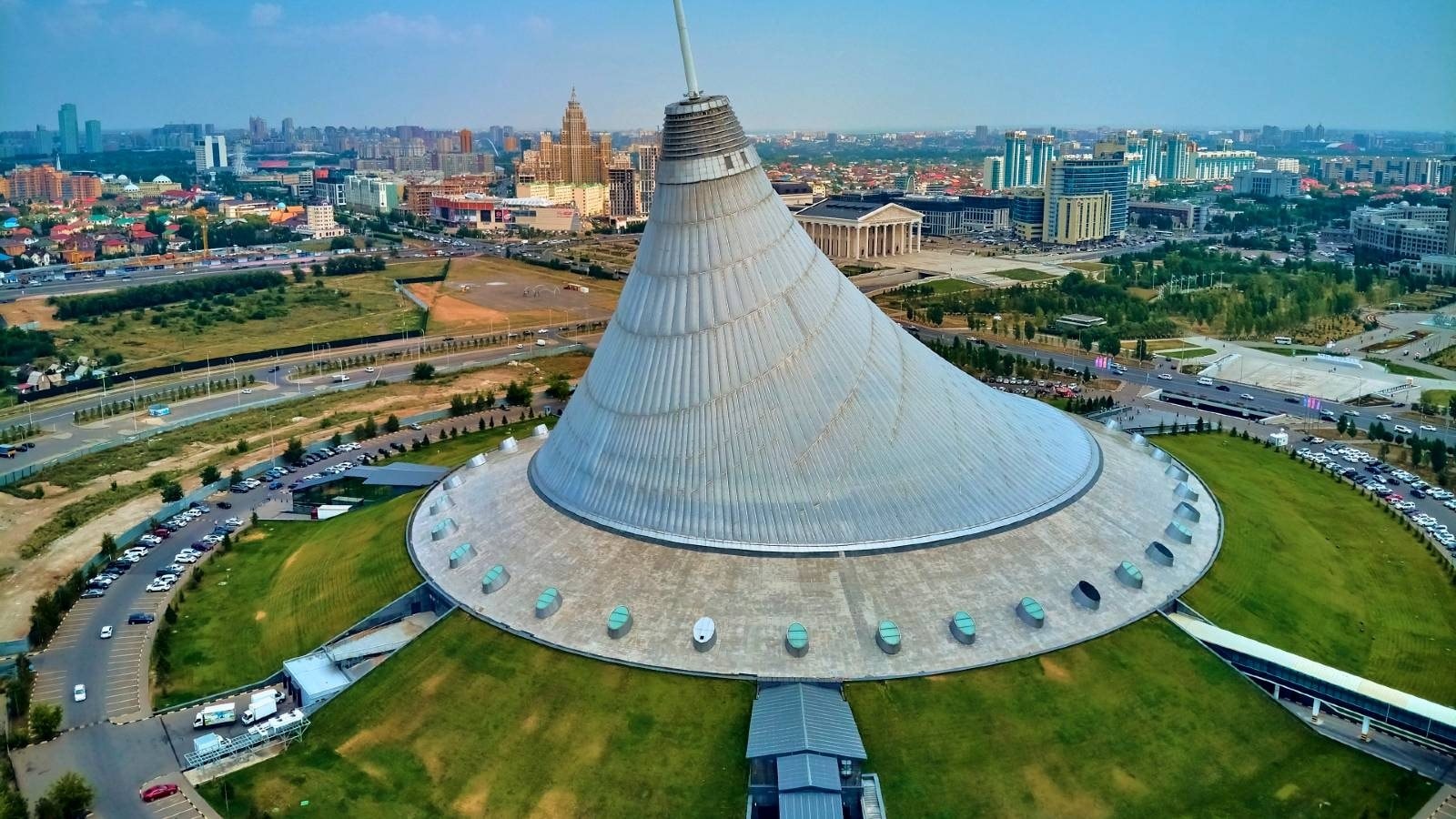
Its roof structure comprises a conical steel frame with steel cables suspending a transparent ETFE membrane, providing both lightness and durability. This dome not only creates a distinctive architectural icon but also covers an area of approximately 344,445 sq ft, protecting the interior from harsh external weather conditions while maintaining a comfortable environment year-round.
Galleria Vittorio Emanuele II in Milan, Italy, is one of the world’s first and most renowned shopping malls, constructed from 1865 to 1877.
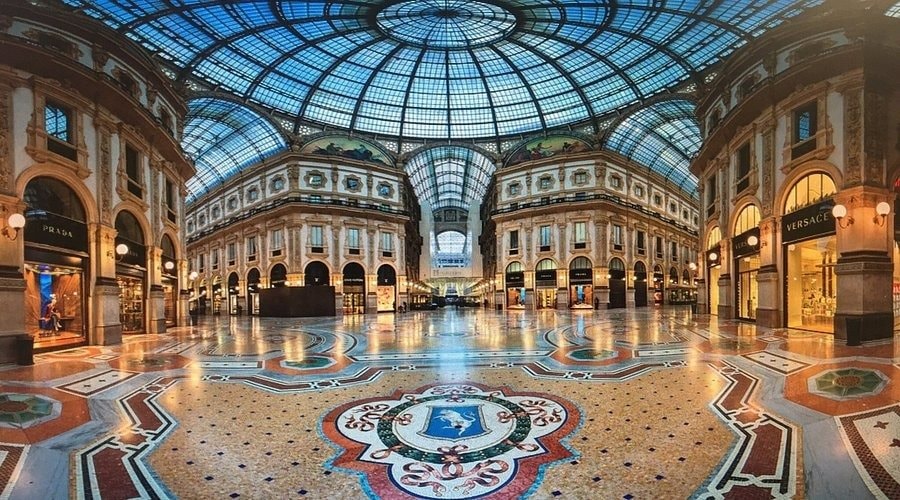
Designed in the shape of a cross, the mall features glass and steel dome roofs covering its walkways, a cutting-edge technique at the time. The highlight is the central dome, rising to a height of approximately 154 ft with a diameter of 118 ft, complemented by glass and steel domes along the corridors, flooding the space with natural light and creating an airy ambiance.
The steel framework ensures durability and contributes to the mall’s architectural significance, seamlessly blending technology and art from the 19th century.
The Biggest Steel Arch in the World, Made in Vietnam: A Comparison of Unique Steel Structures, from the Billion-Dollar Stadium to the Million-Square-Meter Exhibition Center.
The world has witnessed the rise of colossal steel domes, from stadiums and exhibition centers to iconic national landmarks. These structures stand as a testament to the ingenuity and prowess of the construction industry, pushing the boundaries of what is possible.

